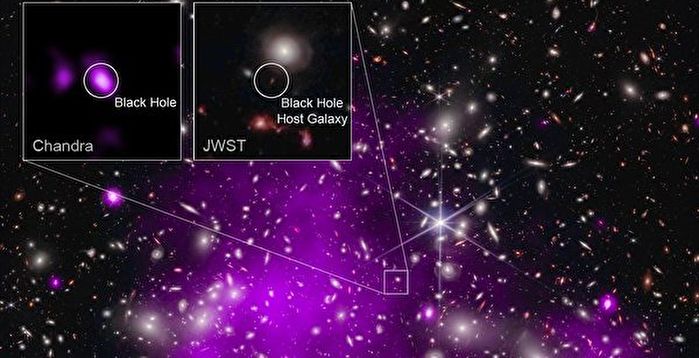The most distant supermassive black hole to date has been discovered by scientists and astronomers using the Chandra X-ray Observatory and the Webb Space Telescope. The black hole resides in the UHZ1 galaxy, and was found to be 13.2 billion light-years away from Earth, making it one of the most significant discoveries in recent astrophysics.
According to a news article published by The Epoch Times, the black hole was observed with the help of a “cosmic magnifying glass,” also known as gravitational lensing. This phenomenon occurs when a massive celestial body creates a large curvature of spacetime, causing light around it to bend.
The new discovery is considered crucial in understanding the early universe, as the black hole was formed 470 million years after the Big Bang. Such a young black hole provides astronomers with substantial information regarding the formation of the universe and the early stages of black hole development.
The research team used the NASA Chandra X-ray Observatory and the James Webb Space Telescope to identify telltale signs of the growing black hole. The galaxy in which the black hole is located, UHZ1, is approximately 13.2 billion years old, with the black hole forming just 3% of the universe’s age.
Astronomers were able to determine the black hole’s age due to its massive size, as black holes typically evaporate over time. Most black holes at the centers of galaxies have a mass of about one-tenth the total mass of the stars in their host galaxy. However, this newly discovered black hole is growing to a mass equivalent to the total mass of our Milky Way galaxy.
The findings were detailed in a paper published in the journal Nature Astronomy on November 6, 2023, marking a significant milestone in astrophysical research.
Research co-author and astronomer Akos Bogdan stated, “We need the Webb telescope to search for this extremely distant galaxy and the Chandra Observatory to search for the supermassive black holes within it.” Bogdan highlighted the importance of gravitational lensing in this discovery and how it amplified the infrared light signal detected by the JWST, allowing the Chandra Observatory to detect faint X-ray sources.
Observing this discovery can help answer longstanding questions about the formation of supermassive black holes and confirm theories about their origins. Evidence from this discovery supports the “heavy seed theory,” suggesting that a giant gas cloud collapses and condenses to form a supermassive black hole.
The team of astronomers and scientists involved in the discovery plan to use the data collected to gain further insights into the early universe with the help of the Webb telescope and other space telescopes. The discovery has marked a significant leap in understanding the cosmos, shedding light on the mysteries of the universe’s earliest days.
